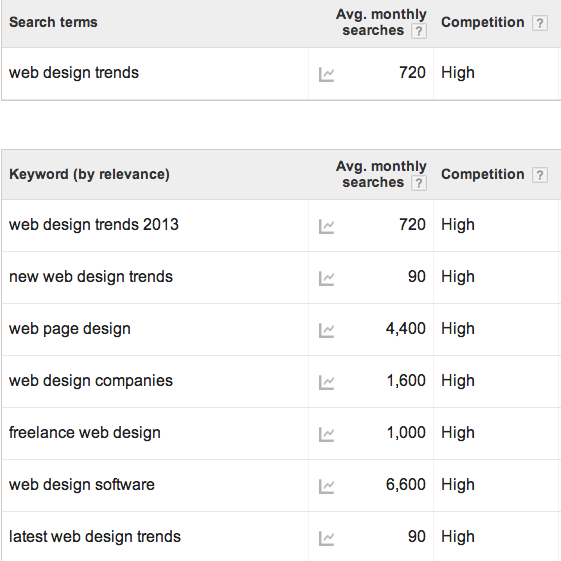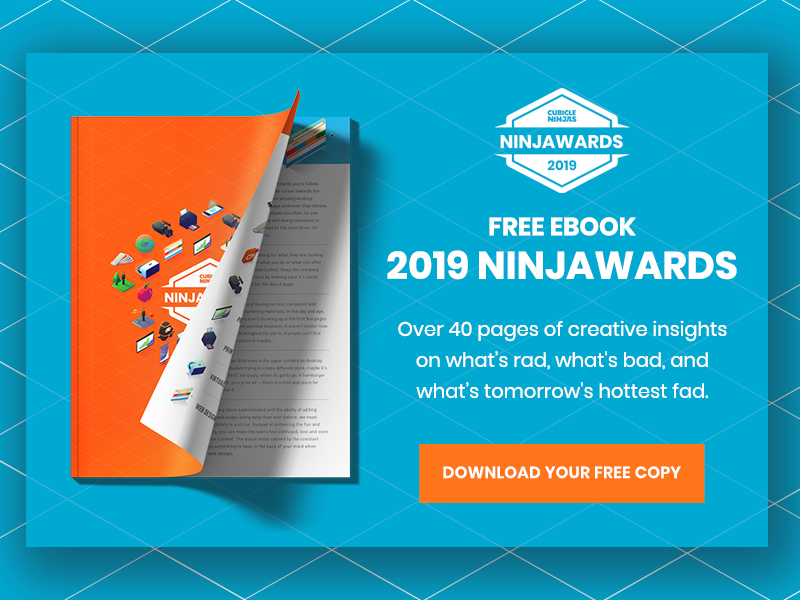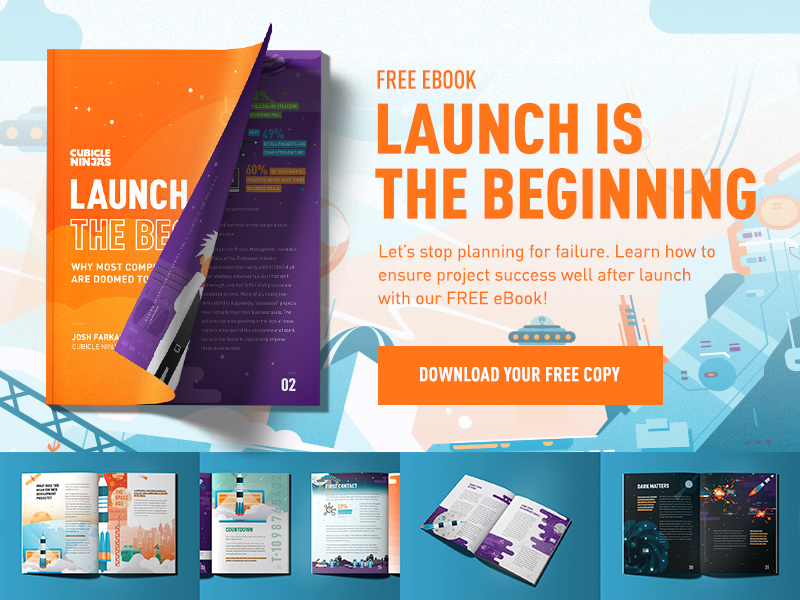
Writing articles, creating campaigns, and crafting awesome e-newsletters all takes a great deal of time. It’s wonderful to see the content you create drive traffic back to your site or draw awareness to your brand. The unfortunate thing about creating content is sometimes it gets lost fast. And how heartbreaking is it when you’ve spent all this time and energy creating it all only for it be buried beneath all the new content created every day.
There are ways to creating campaigns that last longer, therefore the work you put into it will have a higher return on investment.
Here’s a 4-step guide to creating relevant content that lasts. It’s sort of a how-to/case study. I’ll be using Cubicle Ninjas’ last blog series campaign, Ninjawards 2014, as an example, so you can give it a try in your next campaign or blog series!
Update 1-1-2015: The Ninjawards campaign still drives a significant amount of traffic to our site. Each article ranks for more than 3 highly searched keywords.
A 4-Step Guide to Creating Relevant Content
Step 1 – Goal Setting
The Ninjawards 2014 consisted of a 6-part series on the latest trends in design. The goal was to provide 6 ultimate design guides for 2014 for those searching for ideas and inspiration for their next project. I use Trello to keep all my goals in check for each article or campaign.
Step 2 – Keyword Research
To make sure each article was highly searchable, I started to do some keyword research. I used tools like AdWord Keyword Planner and Ubersuggest to give me an idea of what people were searching for. Since the campaign consisted of a 6-part series, I’ll focus on just the article: Ninjawards: Web Design Trends 2014 as an example.
I searched the keyword “web design trends”. In the image below, you’ll see “web design trends 2013” has a significant amount of monthly searches, but the competition is high. Since I was looking at this data in December 2013, this data tells me the keyword stayed relevant all year long, but the competition is high. The next step was to see when it became a competitive keyword.
Step 3 – Check for Trends
To check when “web design trends 2013” became a highly competitive keyword, I turned to Google Trends.
I searched “web design trends 2013” with “web design trends 2014” to compare the two. I learned if I used “web design trends 2013” earlier in the year, it would have a high monthly search volume along with a low competition. While this keyword started to slowly decrease in search volume around the end of the summer, “web design trends 2014” increased in search volume around October 2013. Take a look at the graph below.
By looking at the data, I figured the best time to start promoting the article, Ninjawards: Web Design Trends 2014, was now (December 2013). This way, I could grab some authority on this keyword before the competition increased.
Step 4 – Analyze The Data
Ninjawards: Web Design Trends 2014 started to rank for “web design trends 2014” as soon as the new year hit.
Below you’ll see some data found in HubSpot. The green indicates organic search volume. We used the same type of keyword research strategy for all 6 articles (app design trends 2014, branding trends 2014, etc).
Because of the Ninjawards 2014 campaign, we started to see more traffic in December but gained the most significant amount of traffic starting in January. Since I took advantage of a long-tail keyword at the moment it started to become “trendy”, the article continues to have around 200-300 views a week since it was first published on December 20th, 2013.
The Ninjawards campaign teaches us why it’s important to understand what people are searching for in order to build relevant content. It’s also a good idea to keep specific content marketing goals in mind. At the beginning of the article, I mentioned my goal for this campaign: to make a 6-series guide on trends for the year 2014. I wrapped my keyword research strategy around my goal to stay focused. If I were to have written an article about the best trends of 2013, it could have been packed with great value, but would anyone care? Maybe. But the keyword data tells us no and to focus on the year ahead instead.
What are some of your tips for longer lasting content?
About the Author: Shannon Callarman is the Marketing Coordinator at Cubicle Ninjas. She’s the tiny ninja behind the CN Twitter. You can also follow her on Google+


















These is a great guide to finding the right things to right about that will keep organic traffic rolling in. Great work.
Thanks for including a link to our HubSpot review!
Fantastic article. We are also talking about content and more content. Yet, we skip over the important part about it. It needs to be relevant to our audience and we need to continue to give life to what works.
Thanks so much for sharing your tips!
Hi Shelly! I agree completely. It’s also wonderful to see old, but still relevant content recreated in new ways. For example, taking a blog post and transforming it into a presentation on SlideShare or a video for YouTube. Thanks so much for stopping by 🙂